I’m not sure what electronics manufacturers are thinking by making devices with batteries soldered into circuit. I guess they are thinking “this is a rechargeable battery”, but eventually those batteries quit recharging. This is a problem that users of older generation iPods and iPhones are probably becoming very aware of.
Anyhow, since I like keeping things out of the landfill when I can, I have a soldering iron handy. I’m using a 3.7 VDC Li-Ion 120 mAh battery marketed for this purpose. I think I paid about $5 for it. There are more expensive versions of the same replacement online, and given the proclivity of cheap lithium batteries to burst into flame and the proximity of this device to human heads it might not be a bad idea to spring for the more expensive variety. I’m not sure if more money means more safety, and it’s not my head in danger, so I went with the cheapest battery I could find. I would have thought being a $200 headset system and all that Plantronics would have an official battery to buy as a replacement, but I wasn’t able to find one.
Start with removing the one screw at the base of the ear piece. The silver shell should separate from the black portion that sits on the ear.
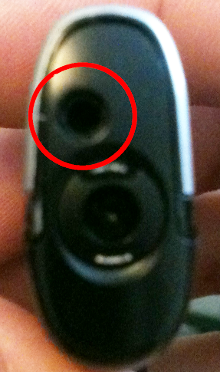
Here are the two solder joints connecting the battery to the printed circuit board. There was also a bit of glue that I pealed off at this point before soldering.
Carefully work the battery out of it’s comfortable little nook without bending the PCB too severely.
Here is the new battery (green) next to the old (still connected) battery. Notice how the new battery has a bit of tape covering the red (postive) wire. This is probably a good idea as it prevents the two wires from potentially shorting and causing a fire. You should probably throw a bit of tape on the end of the red wire on your old battery (once removed) for safer storage before you can get around to recycling it. Incidentally, Batteries Plus has many locations across the United States and they’ll take your old junk batteries without a fee.
After the new battery is soldered on, carefully tuck it back into place and then reassemble the headset.
..And that’s it. You can be done with the whole process in under 5 minutes if your soldering iron heats up fast enough.

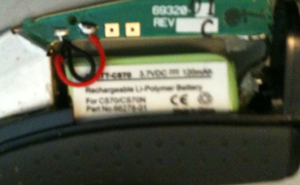
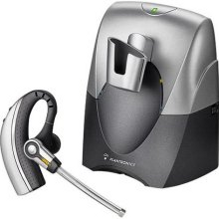
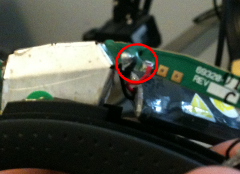
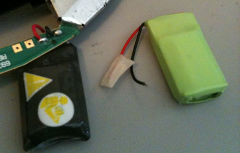

Leave a Reply